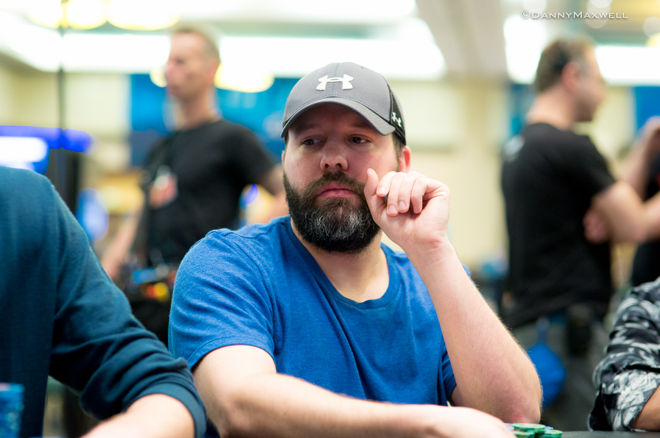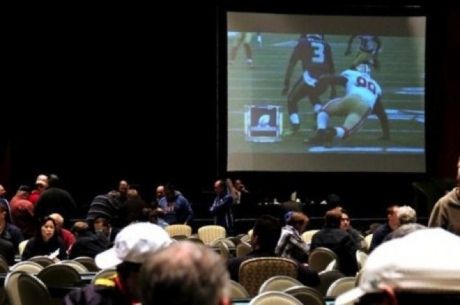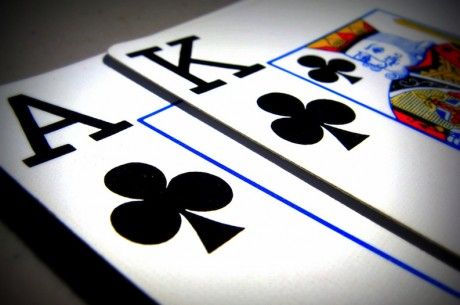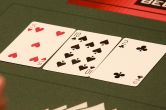Missing with Ace-King: Analyzing a Big Bluff in the PCA Main Event

Covering live poker tournaments for a living affords me the opportunity to see countless thousands of hands played out, many of which offer interesting and potentially valuable insights into how players �� both amateurs and professionals �� play the game. In this ongoing series, I��ll highlight hands I��ve seen at the tournaments I��ve covered and see if we can glean anything useful from them.
The Scene
It��s Day 4 of the $5,300 buy-in 2016 PokerStars Caribbean Adventure Main Event, one of the premier poker tournaments in the world. The tournament is in the money with roughly 150 players remaining out of a starting field of 928.
Level 20 (5,000/10,000/1,000) has recently begun, and this hand goes down between three players: feared Canadian crusher Ami Barer, Australian amateur Ken Demlakian, and experienced American grinder David Eldridge (pictured above) who was making his second straight PCA Main Event cash.
The Action
Barer opened to 20,000 from an early position and Eldridge three-bet to 53,000 from the cutoff. Demlakian then called from the button, and Barer came along as well, making it three to the 3?3?2? flop.
The action checked to Demlakian who bet 112,000. After Barer got out of the way, Eldridge put Demlakian all in for 309,000 total.
Demlakian called, tabling 7?7? for an overpair. He was leading the A?K? of Eldridge, and things stayed that way through the 5? turn and 2? river. Demlakian doubled up to about 800,000, while Eldridge was left with 540,000.
Concept and Analysis
After an aggressive player (Barer) opens with a raise, Eldridge makes a pretty standard three-bet with a premium hand. Demlakian cold-calls behind him, and the original raiser comes along as well.
Postflop, action checks to Demlakian, and he fires out a bet of a little more than half-pot. Barer folds, and Eldridge is in an interesting spot. The cold-call from Demlakian is the key here, because it shows considerable strength to call two raises from dangerous players with one still left to act who opened from an early position.

From Eldridge��s perspective, that action combined with betting the 3?3?2? flop points to one thing for Demlakian �� a pair in the hole, and likely a decent one since it would seem unlikely for someone to go set-mining for 53,000 with only about 300,000 behind.
Eldridge has two choices: fold his ace-king or shove all in and try to get Demlakian off of his pair.
Of course, folding is the safer play, but Eldridge sensed a chance to increase his stack with a powerful all-in bluff shove. It might look a little crazy, but it��s actually a good spot for the shove.
First off, the big risk of bluff-shoving ace-king on most flops is that you can run into a big hand or someone who paired their kicker with AxXx, leaving you with three outs. The latter is not a big concern here since Demlakian is unlikely to have called two raises with Ax2x or Ax3x. Meanwhile if Demlakian had a big pair, say queens or better, he probably would have reraised preflop.
Stack sizes are pretty good here, too, since Demlakian can fold and still have a very playable stack of around 20 big blinds with 90-minute levels. And if Eldridge is called and he loses, he still has plenty of chips with which to work.
Also, if Eldridge does get called, he can be pretty confident he has decent equity. Holding ace-king against middle pairs in this spot, Eldridge is only about a 3-to-1 underdog, so getting called isn��t the end of the world as he still would have a reasonable chance of taking down the pot with his six outs.
In the end, Demlakian was able to muster the nerve to call off his stack in the thin spot and successfully faded Eldridge��s outs. However, Eldridge��s bluff was still a powerful move, one that put big pressure on Demlakian and forced him to make a tough decision for his stack.
Want to stay atop all the latest in the poker world? If so, make sure to get PokerNews updates on your social media outlets. Follow us on Twitter and find us on both Facebook and Google+!









